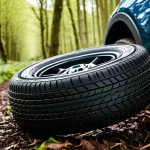Essential Preparation for Kawasaki KZ1000 Carburetor Maintenance
Before undertaking Kawasaki KZ1000 carburetor maintenance, thorough preparation ensures safety and efficiency. Begin by gathering all necessary tools and cleaning supplies specifically suited for the KZ1000 model. Essential items include screwdrivers, carburetor cleaner sprays, compressed air, and a clean workspace with good lighting.
Safety is paramount—review carburetor safety precautions before starting. Disconnect the battery and work in a well-ventilated area to avoid inhaling solvent fumes. Wear gloves and eye protection, and ensure there are no open flames nearby since carburetor components may contain residual fuel.
Have you seen this : Revamp Your Yamaha MT-07: The Complete DIY Guide to Installing an Aftermarket Windscreen for Enhanced Wind Protection
Next, assess the carburetor’s initial condition. Look for symptoms such as rough idling, poor throttle response, or high fuel consumption. These common signs indicate that maintenance is required. Inspect external surfaces for dirt buildup or corrosion, which can signal the need for a comprehensive cleaning.
Preparing appropriately helps prevent damage, ensures personal safety, and reduces troubleshooting later. Staying organized and mindful of these steps will make the Kawasaki KZ1000 carburetor maintenance process smoother and more effective.
Topic to read : Ultimate Guide to Maintaining a Pristine Air Intake on Your Honda CB650F: Top Strategies for Success
Removing and Disassembling the KZ1000 Carburetor
Careful Kawasaki KZ1000 carburetor removal is the foundation for successful maintenance. Begin by draining the fuel from the carburetor to avoid spills and fire risk. Next, disconnect the fuel lines, throttle cables, and choke linkage with gentle, steady motions to prevent damage. Use the correct screwdrivers or wrenches tailored for the KZ1000 to loosen mounting bolts securely.
Once removed, focus on disassembly steps performed methodically. Lay out a clean workspace and organize parts as you remove them to simplify reassembly later. Start by detaching the float bowl with care to preserve the gasket integrity. Follow by removing jets, needles, diaphragms, and springs—each part plays a critical role in the carburetor’s function and must be handled delicately.
In identifying carburetor parts unique to the KZ1000, note the two-stroke style slides and dual carb setup, which may differ from other bikes. Recognizing these components ensures proper handling and prevents confusion during reassembly. Keep parts dry and avoid forcing any components, as this can lead to costly damage and poor operability.
Deep Cleaning Procedures for Optimal Carburetor Performance
Effective KZ1000 carburetor cleaning starts with assembling the right carburetor cleaning tools: carburetor cleaner sprays, fine brushes, compressed air, and safe solvents. Choose cleaners designed to dissolve varnish, gum, and fuel residues without damaging sensitive parts.
Begin by soaking removable components, such as jets and float bowls, to loosen hardened deposits. Use thin wires or specialized brushes for cleaning narrow internal passages and jets, ensuring all clogging materials are removed. Compressed air is essential for blowing out debris from tiny orifices—this step improves fuel flow and mixture balance.
Inspect each part during cleaning. Look for wear on needles, jets, gaskets, and diaphragms. Damaged or stiff components should be replaced to maintain optimal engine performance and prevent leaks. Thorough cleaning to factory standards restores carburetor efficiency, preventing symptoms like rough idling or poor throttle response.
Following these deep cleaning techniques not only improves current function but extends carburetor lifespan. Prioritize precision and patience, as rushing risks missing deposits or damaging components, which compromises KZ1000 carburetor maintenance efforts.
Expert Reassembly and Carburetor Tuning
Reassembling the KZ1000 carburetor demands precision and attention to detail. Begin by carefully aligning all components, ensuring that gaskets and seals remain intact to prevent fuel leaks. Use your organized parts from the disassembly steps to avoid confusion. The float bowl must be seated correctly, as improper placement affects fuel flow and engine performance.
Setting float levels is critical. Incorrect float height leads to flooding or fuel starvation. Use a float level gauge per Kawasaki specifications, adjusting gently until the measurement matches factory settings. This ensures proper fuel delivery for balanced operation.
Next, focus on carburetor tuning techniques. Adjust mixture screws to optimize air-fuel ratio; start with factory baseline settings, then fine-tune while the engine runs smoothly. Proper adjustments improve throttle response and fuel economy. Finally, synchronize all carburetors to guarantee even distribution of fuel and air across cylinders, which is vital for a smooth ride.
These reassembly and tuning steps enhance performance and reliability. Following precise methods reduces issues caused by poor assembly, maintaining the Kawasaki KZ1000’s legendary engine efficiency and longevity.
Essential Preparation for Kawasaki KZ1000 Carburetor Maintenance
Proper preparation for carburetor cleaning is critical for effective Kawasaki KZ1000 carburetor maintenance. Start by assembling all specific tools and supplies, such as screwdrivers, carburetor cleaner sprays formulated for the KZ1000, compressed air, and clean rags. This upfront organization prevents interruptions during maintenance.
Before disassembly, thoroughly review carburetor safety precautions. Disconnect the battery to avoid electrical sparks, and perform the work in a well-ventilated area to minimize exposure to harmful fumes from cleaning solvents and residual fuel. Wearing gloves and eye protection further safeguards against accidents.
Assessing the carburetor’s current condition helps target issues efficiently. Common symptoms signaling a need for maintenance include rough idling, difficulty starting, inconsistent throttle response, or increased fuel consumption. Visual inspection often reveals dirt buildup or corrosion on external surfaces, indicating deeper internal clogging.
Prioritize a clean, well-lit workspace and take care to handle parts gently. Such Kawasaki KZ1000 carburetor maintenance preparation not only enhances safety but also streamlines the cleaning and repair process, reducing the risk of damage or missteps.
Essential Preparation for Kawasaki KZ1000 Carburetor Maintenance
Effective Kawasaki KZ1000 carburetor maintenance begins with meticulous preparation for carburetor cleaning. Gather all necessary tools specific to the model, including screwdrivers, carburetor cleaner sprays suitable for the KZ1000, compressed air, and clean rags. Having these ready avoids disruptions during the process.
Prioritize reviewing carburetor safety precautions thoroughly to ensure a safe workspace. Disconnect the battery to prevent electrical hazards and work in a well-ventilated area to minimize exposure to fumes from cleaner solvents and residual fuel. Wearing gloves and eye protection protects against chemical irritation and accidental contact.
Before dismantling, assess the carburetor’s condition. Watch for symptoms like rough idling, inconsistent throttle response, or increased fuel consumption. Such indicators point to internal clogging or wear that requires attention. Visually inspect for external dirt buildup or corrosion, which often correlates with internal issues.
Preparing carefully enhances safety and efficiency, setting the foundation for successful Kawasaki KZ1000 carburetor maintenance and reducing the risk of damage or error during subsequent cleaning and repair steps.









